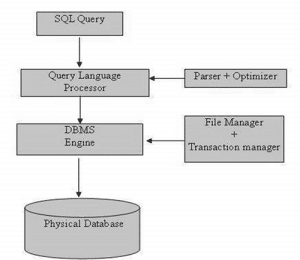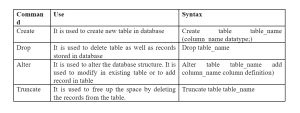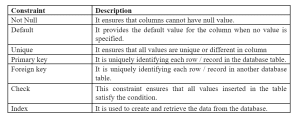Structured Query Language (SQL)-
In this blog we will discuss the most important language related to database management systems. SQL is designed to manage or retrieve data from relational databases. We need to learn this structured query language because it is a computer language used for storing, manipulating and retrieving the data from relational databases. This is the standard language for all relational database management systems like mysql, oracle, sql server etc.
For Free, Demo classes Call: 8983120543
Registration Link: Click Here!
What is RDBMS –
The RDBMS is nothing but a relational database management system and is based on the relational models. This is the basis for SQL and all modern database systems like Mysql server, oracle etc.
SQL Applications –
SQL is the most widely used query language in all database management systems.
- SQL allows the user to access the data from relational database management systems.
- SQL allows the user to create or drop the tables and database from the system.
- SQL will allow the user to define the new data in the database and also allow them to manipulate the data.
- It allows the user to set permission on procedure, tables and views.
SQL Process flow –
When we write and execute a SQL command for relational database management system, then system will identify the best way to execute your task and SQL query engine how to interpret the task.in this process mainly four components are included such as query dispatcher, optimization engines, classic query engine and SQL query engine. Here classical query engine handles the non-SQL query but SQL query engine won’t handle the logical files. Following figure shows the SQL structure.

Commands in SQL-
The SQL commands are nothing but the instructions and are used to communicate with the database. It is also used to perform many operations, tasks, functions and to solve queries. The SQL command performs various operations like create, alter, drop, modify etc. The SQL commands are classified in five different groups as follows.
- Data definition language (DDL)
- Data manipulation language (DML)
- Data control language (DCL)
- Transaction control language
For Free, Demo classes Call: 8983120543
Registration Link: Click Here!
1.Data definition language (DCL) –
DDL is used for creating, deleting and altering the table etc. All commands used in DDL are auto committed and permanently saves all the changes in the database. The following commands are used in DDL.

2. Data Manipulation Language (DML)
DML is used to modify the records in the database and DML is fully responsible for any form of database changes. The DML is not auto-remitted so we can roll back the changes made in the database. The following commands are used in DMLData Manipulation Language (DML).

3. Data control language (DCL) –
The DCL is used to grant or revoke the permission from any database user. The following commands are used in DCL.

4. Transaction control language (TCL) –
The TCL commands are used only with DML commands like insert, delete and update. The following commands are used in TCL.

5. Data query language (DQL) –
The DQL is used to fatch the data from the database. Only one command is used in DQL.
![]()
For Free, Demo classes Call: 8983120543
Registration Link: Click Here!
SQL Constraints –
The SQL constraints are used on data columns on a table. These are used to limit the data type of data that can go into the table. This ensures the data accuracy and reliability in the database. These constraints can be used at column or table level. The table level constraints can be applied to whole table and column level constraints can be applied to the column. The following constraints can be commonly used in SQL.

Author:-
Madhuri Diwan
Call the Trainer and Book your free demo Class for JAVA now!!!
© Copyright 2021 | Sevenmentor Pvt Ltd.

